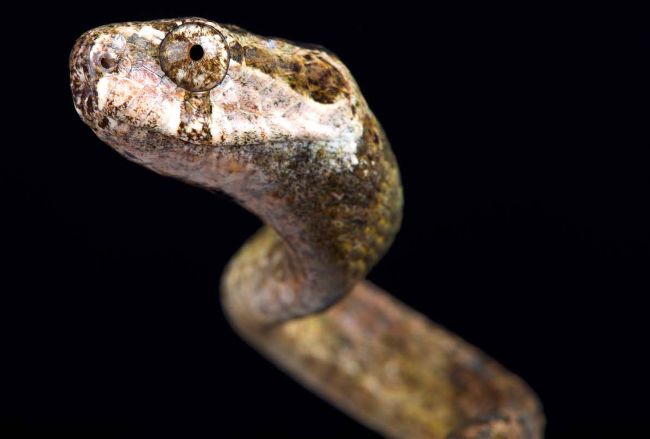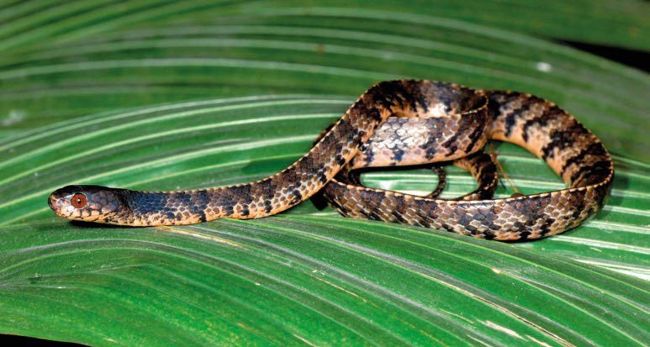Snail-eating snakes
Most snakes can be maintained quite successfully on a diet of rodents, but there are exceptions. Snail-eating snakes, also known as slug-eating snakes, fall within this category, but they are rarely available, and very little has been documented about them up until now, as Christian Castille explains.

Aplopeltura boa.
Photo courtesy reptiles4all/
www.shutterstock.com These particular snakes are found both in the New World, and also in southern Asia, where approximately 16 species of these coloubrids are recognized, forming the subfamily Pareinae. Their anatomy helps to define them, with long, slender teeth present in their mouths, but their classification is not straightforward, partly because not all snail-eaters actually feed exclusively on gastropods, nor are they all arboreal in their habits.
The core members of this complex are the members of the genera Aplopeltura, Pareas and Dipsas. I personally would like to add Duberria and Sibon into this group, but systematic reviews may not agree. Nevertheless, all of these snakes are extremely rarely available at present, and their habits, including their behaviour in the wild, are poorly understood. I hope this article can change some of that, and introduce more people to this fascinating group of reptiles. They make a very interesting addition to any collection.
How my interest began
While this article is primarily about the keeping of Aplopeltura and Pareas species, it can be used as a guide for others. My fascination with them began when I saw them on a list sent to me by a contact. I have always had a huge interest in invertebrate-eating snakes, from rough greens (Opheodrys aestivus) to ring-necked snakes (Diadophis punctatus), and I have kept and bred many of them.

The mountain slug snake (Asthenodipsas vertebralis) is found in Borneo.
Photo courtesy Karim Daoues/
www.lafermetropicale.com I think it is interesting to take a step away from the normal rodent-eating snakes. It may not seem like a vast difference, but snakes that prey upon invertebrates act very differently to other snakes. On the other hand, their husbandry is much harder because of their different feeding habits, and this makes them an interesting challenge to keep. I originally hoped to acquire some Duberria lutrix from an African import years ago but they never arrived, so when I saw a couple of species on this south-east Asian import, I jumped at the chance of owning them.
I ordered two different species of Pareas - P. carinatus and P. vertebralis - and another called the bluntheaded snail-eater (Aplopeltura boa). All came in alive and seemed to be in great health. I placed them into enclosures that mimicked the environment which the exporter had described as their source of origin. I already had plenty of snails that I had bred myself. I separated the species into their respective genera, and divided them up into five per enclosure. From past experience, I knew that snakes that feed on invertebrates seem to be extremely communal and would often hunt together. I imaged that these gastropod-feeding snakes would therefore be no different.